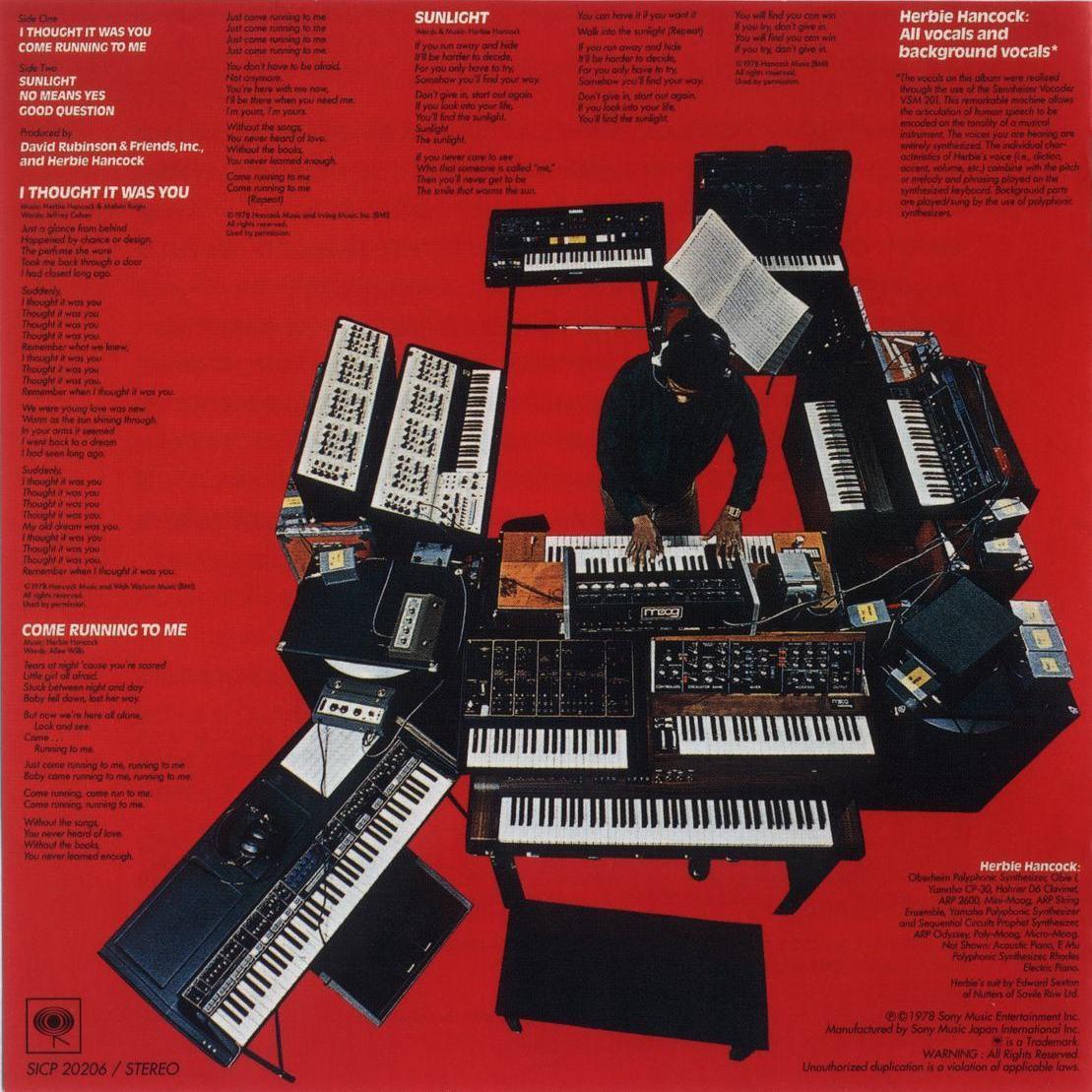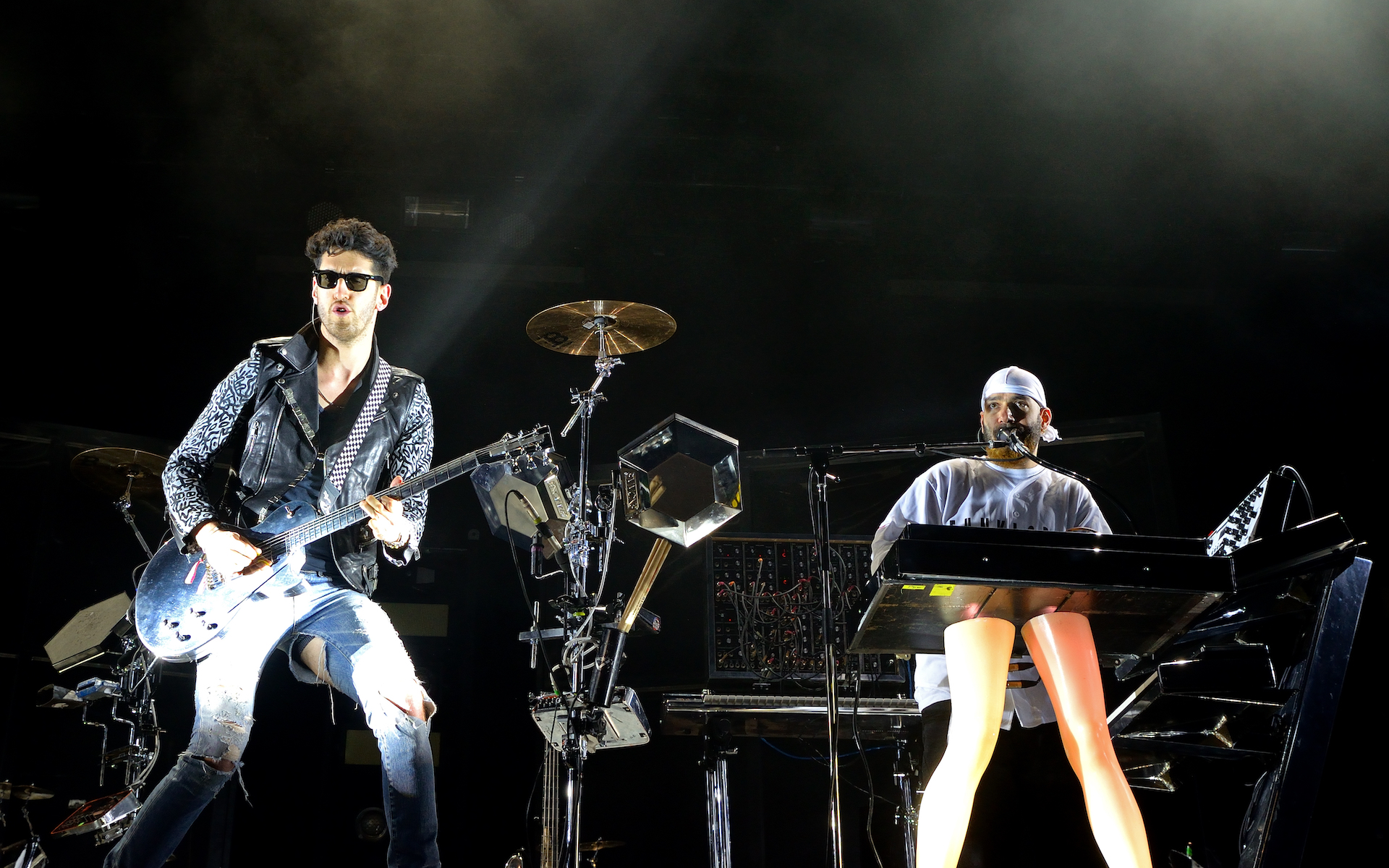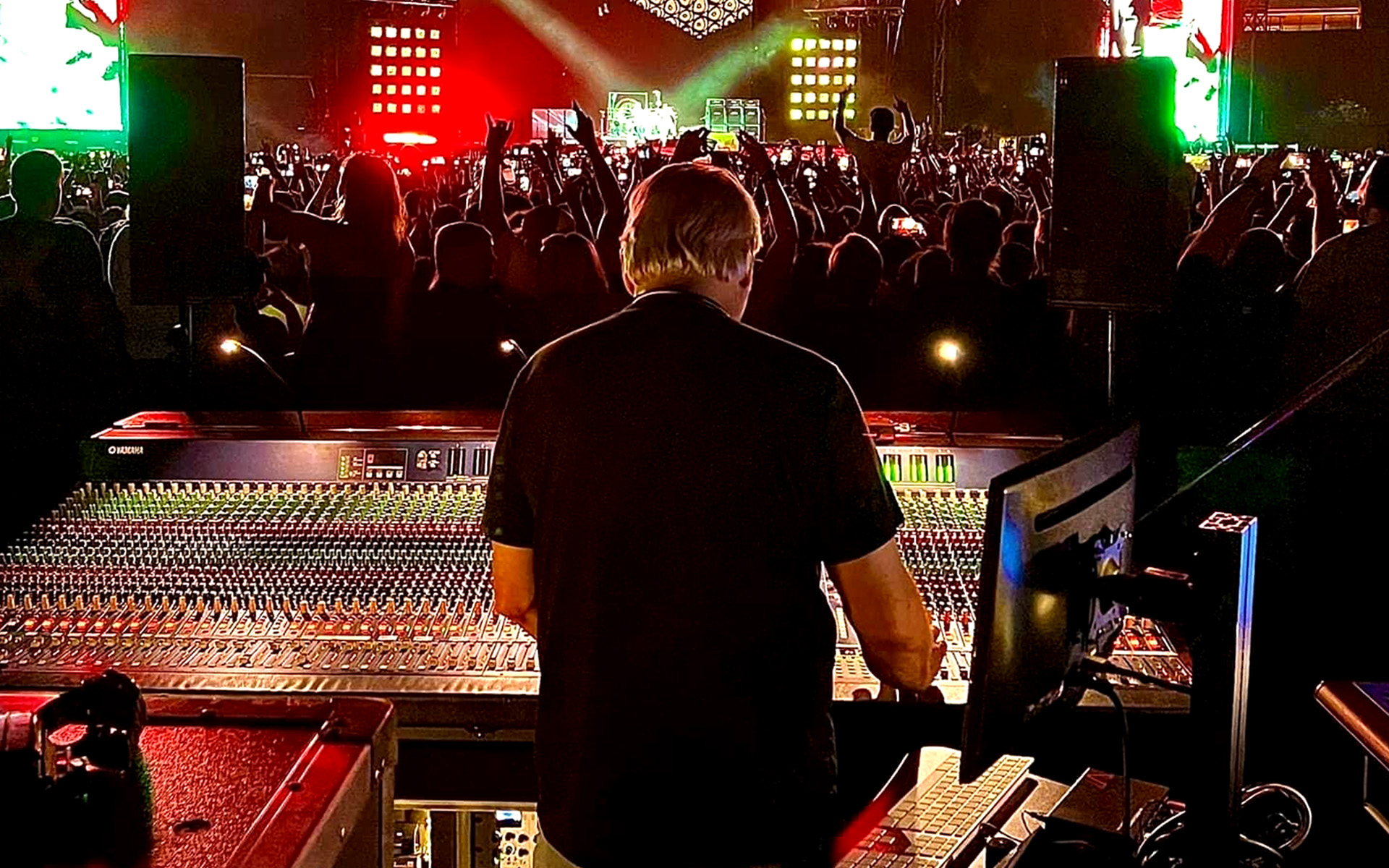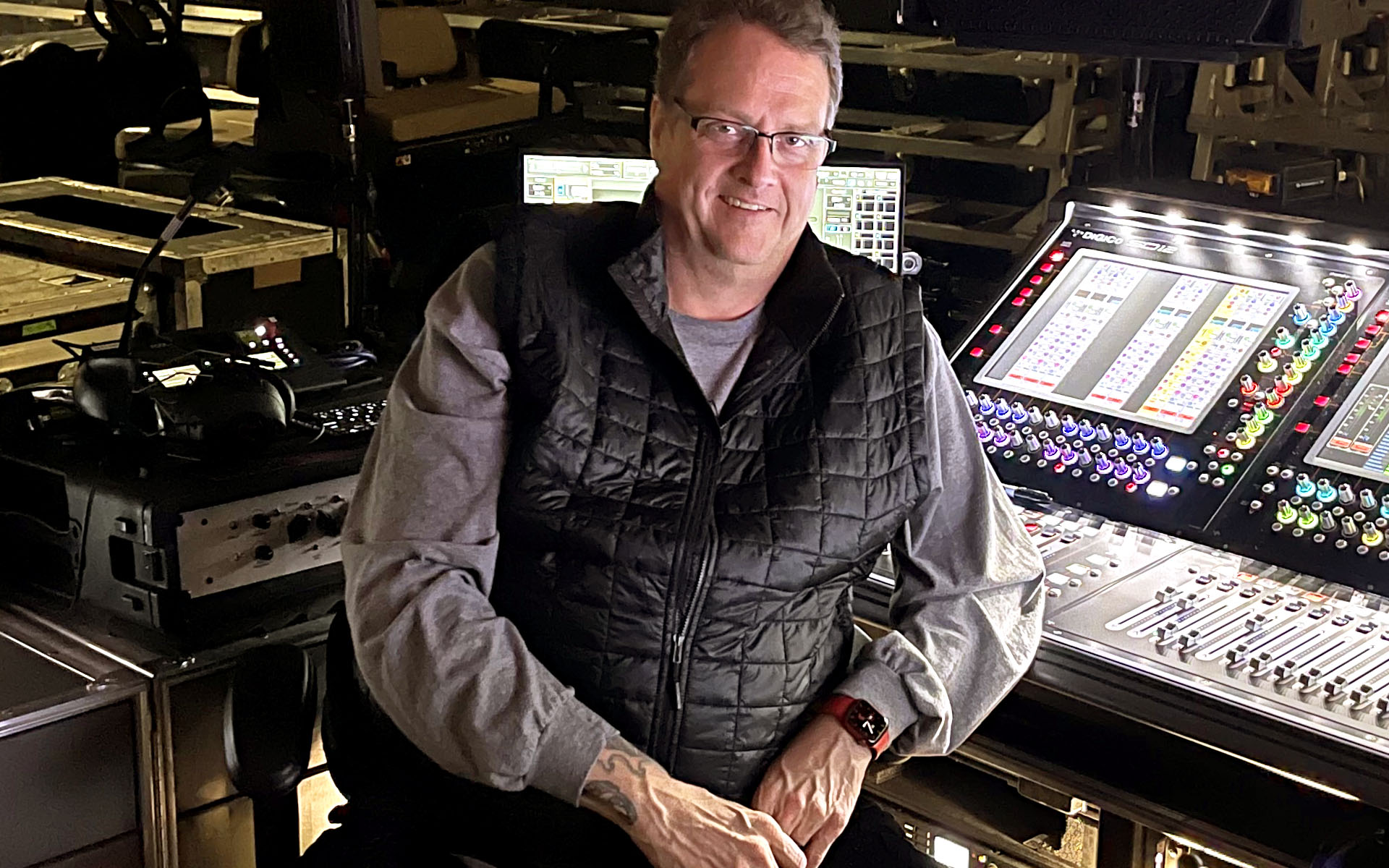This article was created by our partner, Splice, a platform for music production that offers access to millions of royalty-free samples, loops, and presets.
In 1978, Herbie Hancock released Sunlight, an album that delved further into the jazz legend’s explorations of fusion, smooth jazz, R&B, and electro funk. The record is noteworthy for Hancock’s use of the vocoder, an instrument and effect he’d continue to utilize on future albums.
Maybe not as noteworthy to listeners but noteworthy for music makers was the back cover.

It included a kind of lexicon to Hancock’s music – a list of every synth, piece of gear, and keyboard that he used on the record. For P-Thugg, one-half of electro-funk outfit Chromeo, it was a revelation.
STUDY MUSIC PRODUCTION WITH BERKLEE ONLINE
“He listed everything,” P-Thugg recalls. “Not only does he show his setup, but it’s listed in the credits.” Next to a photograph of Hancock’s own stage setup was a rundown of his entire synth and instrument rig, from his Fender Rhodes and Sennheiser VSM 201 to his Minimoog and Yamaha Polyphonic. To an impressionable and young producer, this was his field guide for learning synthesis. “It was all pieces of the puzzle – so this sound is done by this.”
To get a similar look at all of the pieces of the puzzle for Chromeo and P-Thugg, check out the rest of this article on Splice Blog.








